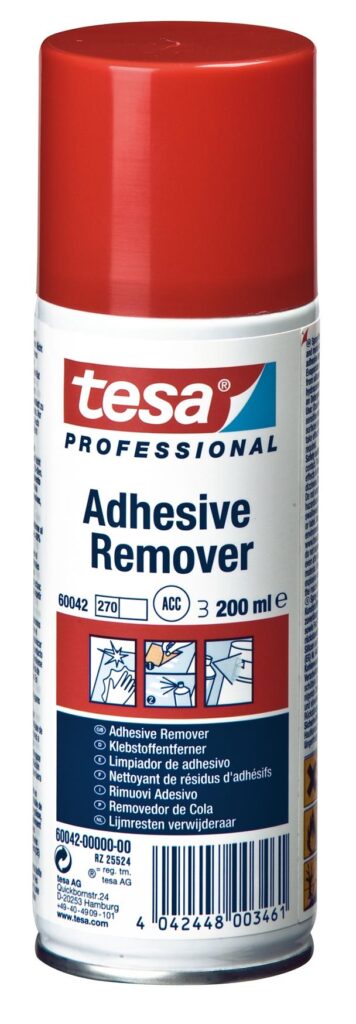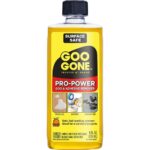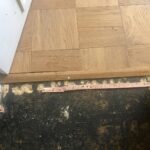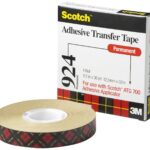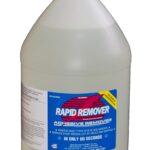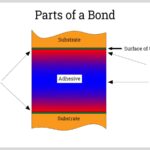Removing spray adhesive can be a tricky process, but there are some techniques that can help make it easier. First, try to loosen the adhesive by using a putty knife or other similar tool. You can also use a hair dryer to heat up the adhesive and make it easier to remove. After it has been loosened, use a cloth or paper towel to wipe away any leftover adhesive. Next, you can use a solvent such as rubbing alcohol or mineral spirits to help remove any remaining residue.
Apply the liquid onto a cloth, and rub it onto the affected area. For harder to remove adhesive, you can use a commercial solvent remover which is specifically designed to dissolve adhesives. It’s also important to protect yourself during the process. Wear protective gloves, goggles, and a face mask to avoid any skin irritation or breathing in any fumes. Once you have removed the adhesive, use a damp cloth to clean the surface and ensure all the adhesive has been removed. Removing spray adhesive can be a challenging task, but with the right techniques and safety measures, it can be done quickly and easily.
How to remove spray adhesive from drywall

Removing spray adhesive from drywall can be a tricky job, but it is possible. To start, use a putty knife or old credit card to scrape off as much of the adhesive as possible. Then, lightly dampen a cloth with warm, soapy water, and rub it over the adhesive in circular motions. If this doesn’t work, you may need to use a stronger solvent. Try mixing equal parts rubbing alcohol and warm water, and apply it to the adhesive with a cloth.
Let the mixture sit for a few minutes before wiping it away. You may need to use a bit of elbow grease to get the adhesive off completely. If all else fails, an adhesive remover from the store may be necessary. Be sure to read the instructions on the container before applying the remover to the drywall. With a little patience, you should be able to get the spray adhesive off the wall.
What will dissolve spray adhesive?
Removing spray adhesive can be a tricky task. One way to dissolve spray adhesive is to use a solvent. Solvents such as rubbing alcohol, acetone, and mineral spirits are effective at breaking down the adhesive. These solutions should be used sparingly, as they can also damage surfaces and dissolve other materials. If you are looking for a non-solvent option, you can also try using heat.
Using a hair dryer, heat gun, or even boiling water can help to loosen the bond of the adhesive. However, this method can also be very dangerous and is best used only as a last resort. If you do not have access to any of these solutions, you can also try using mechanical force. Scraping the adhesive off with a putty knife or using a cloth to wipe off the adhesive are some of the ways you can try to remove it without using solvents or heat. To prevent spray adhesive from sticking, you should always make sure that you are using it in a well ventilated area and are wearing protective gear, such as gloves and a respirator. Additionally, you should never spray adhesive directly onto a surface that you don’t want to adhere to. By following these safety precautions, you can minimize the amount of adhesive you need to remove.
How can you remove glue from drywall?
The first step is to scrape away any excess glue from the drywall with a putty knife or razor blade. Then, use a damp cloth to wipe away any remaining residue. If the glue is still sticking, mix equal parts of warm water and white vinegar and dab it onto the glue with a sponge. Scrub the area with a brush to remove the rest of the glue. Finally, rinse the area with a damp cloth and let it dry completely before painting. With a bit of work, you can remove glue from drywall without causing any damage.
How to remove adhesive on hardwood floor?
Removing spray adhesive from hardwood floors can be tricky, but with the right tools and techniques it can be done. To begin, use a putty knife to scrape up as much of the adhesive as possible. Be careful not to scratch the surface of the flooring. Once most of the adhesive is gone, use a cloth and warm water to clean up any remaining residue. Avoid using harsh chemicals as they can damage the hardwood.
If the residue is still not fully gone, a mixture of white vinegar and baking soda can be used. Put a small amount of the mixture on the affected area and let it sit for a few minutes. Then use a damp cloth to wipe away the remaining residue. Finally, use a wood floor cleaner to restore the shine to the wood. This will help protect it from future damage and make it look like new. With a little elbow grease, you can remove adhesive from hardwood floors without damaging them.
How to remove tile from wall without damaging drywall?
Removing tile from wall without damaging drywall can be a tricky task. The most important factor when removing tile is to use the right tools. To start, use a putty knife to break the adhesive seal between the tile and the wall. Then, use a heat gun or hair dryer to warm up the adhesive and make it easier to remove. Once the tile is loosened, use a utility knife to cut away the adhesive from the drywall. Avoid using too much force when prying the tile off the wall in order to avoid damage. Finally, use a damp cloth to wipe away any residue from the adhesive before applying any new adhesive.
How do you remove old tile adhesive from walls?
Firstly, you need to scrape away any loose adhesive, using a sharp knife or paint scraper. Once the loose adhesive has been removed, you can use a chemical adhesive remover to get rid of the rest. Make sure you wear protective gloves, and that the room is well-ventilated. Apply the remover according to the manufacturer’s instructions, and allow it to sit for the specified amount of time. Once it has done its work, you can use a damp cloth to wipe away the adhesive. Finally, use a sponge dampened with a mild detergent to clean the wall and remove any left-over residue.
